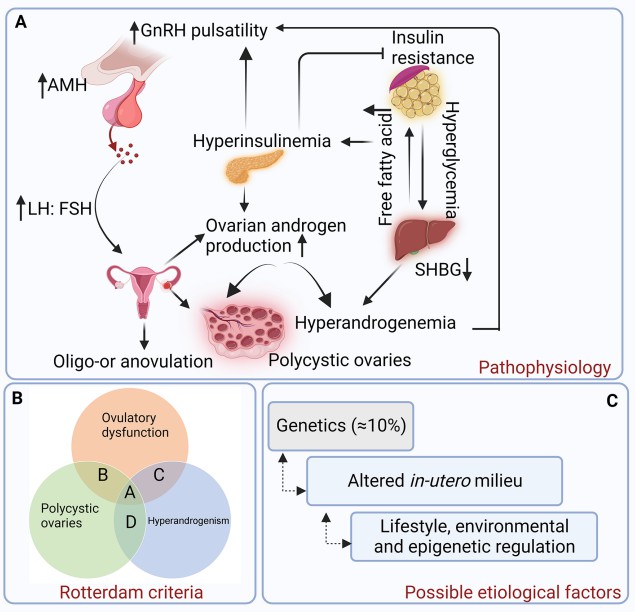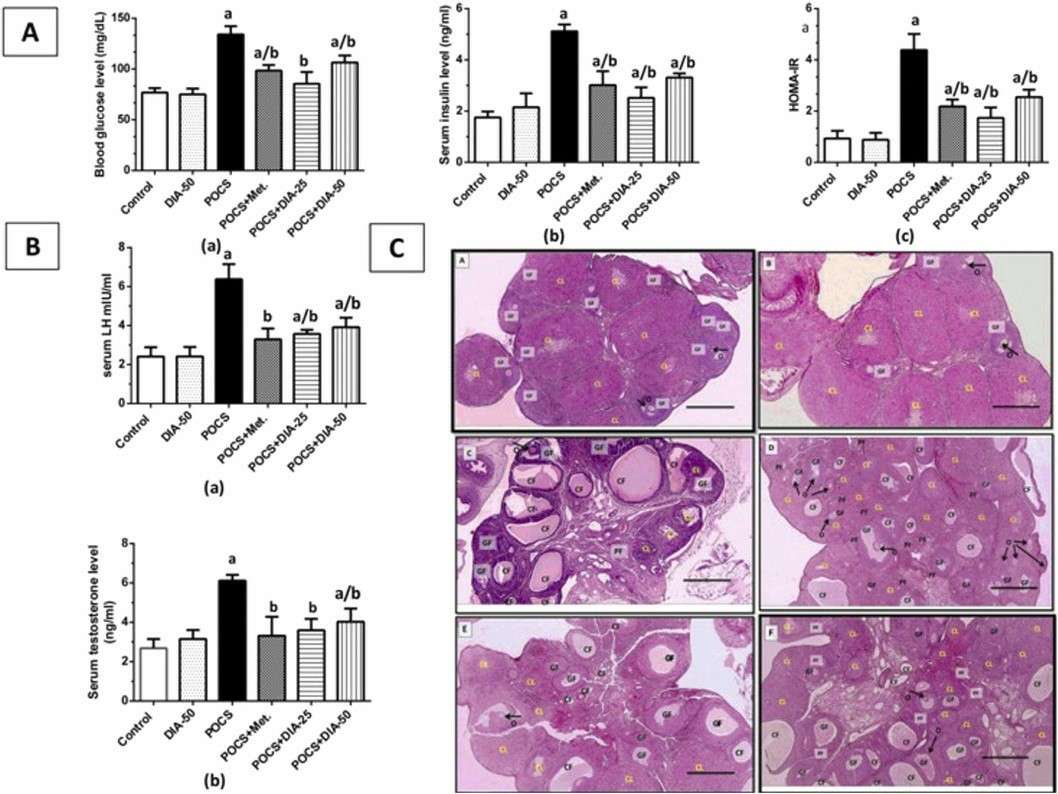Polycystic Ovary Syndrome (PCOS) Model
Creative Bioarray has developed an advanced Polycystic Ovary Syndrome (PCOS) Model designed to support our global clients in the rigorous evaluation of their drug candidates. This model enables researchers to gain valuable insights into the efficacy and safety of potential treatments for PCOS, facilitating the advancement of innovative solutions in women's health.
What is Polycystic Ovary Syndrome (PCOS)?
PCOS is a prevalent endocrine disorder that affects women of reproductive age, manifesting through a combination of symptoms including irregular menstrual cycles, elevated androgen levels, and the presence of polycystic ovaries. This complex syndrome not only disrupts reproductive health but also significantly impacts metabolic and psychological well-being. Individuals with PCOS may experience insulin resistance, weight gain, and a range of psychological challenges, including anxiety and depression. Although the precise etiology of PCOS remains incompletely understood, it is believed to result from an interplay of genetic, epigenetic, and environmental factors. Diagnosis is generally based on the presence of at least two out of three cardinal features: irregular menstrual cycles, clinical or biochemical signs of hyperandrogenism, and the identification of polycystic ovaries through ultrasound imaging.
To advance our understanding of PCOS and to identify potential therapeutic targets, the use of animal models is essential. These preclinical models provide invaluable insights by closely mimicking the pathophysiology of human PCOS, enabling researchers to investigate the underlying mechanisms of the disorder and evaluate drug efficacy.
 Fig. 1: (a) Pathophysiology of polycystic ovarian syndrome (PCOS). (b) Rotterdam criteria diagnostic consensus 2004. (c) Possible etiological factors in PCOS pathogenesis. (Khatun et al., 2024)
Fig. 1: (a) Pathophysiology of polycystic ovarian syndrome (PCOS). (b) Rotterdam criteria diagnostic consensus 2004. (c) Possible etiological factors in PCOS pathogenesis. (Khatun et al., 2024)
Creative Bioarray's Polycystic Ovary Syndrome (PCOS) Model
Animal Species
Female rat
Modeling Method
Rats receive letrozole orally once a day for 21 days to induce PCOS model.
Endpoints
- Body weight monitoring
- Histology analysis (ovary): H&E staining
- Biochemical analysis
- Hormonal analysis
- qPCR or Western blot
- Custom Endpoints: Tailored to meet your specific research needs
Example Data
 Fig. 2: Effect of DIA on the reproductive and metabolic features of letrozole-induced PCOS. (A) Effect of DIA on (a) FBG, (b) serum insulin, and (c) HOMA/IR. (B) Effect of DIA on the hormonal profile; (a) LH and (b) testosterone. (C) H&E-stained sections of the studied ovaries at 200x magnification. (Ibrahim et al., 2022)
Fig. 2: Effect of DIA on the reproductive and metabolic features of letrozole-induced PCOS. (A) Effect of DIA on (a) FBG, (b) serum insulin, and (c) HOMA/IR. (B) Effect of DIA on the hormonal profile; (a) LH and (b) testosterone. (C) H&E-stained sections of the studied ovaries at 200x magnification. (Ibrahim et al., 2022)
Partner with Us
At Creative Bioarray, we are committed to advancing your research through our reliable and rigorously validated PCOS model. Our experienced team is here to support you in navigating the complexities of PCOS and enhancing the efficacy of your drug candidates.
Ready to learn more about how our PCOS model can benefit your research and development efforts? Get in touch with us today for a consultation and customized quote.
References
- Khatun, M., et al. Induced Pluripotent Stem Cells as a Possible Approach for Exploring the Pathophysiology of Polycystic Ovary Syndrome (PCOS). Stem cell reviews and reports, 2024, 20(1): 67-87.
- Ibrahim, Y.F., et al. Diacerein ameliorates letrozole-induced polycystic ovarian syndrome in rats. Biomedicine & Pharmacotherapy, 2022, 149: 112870.